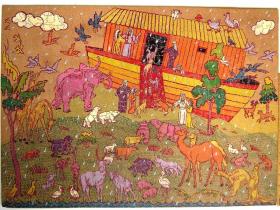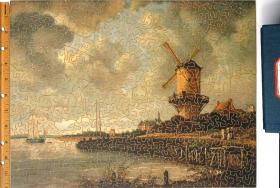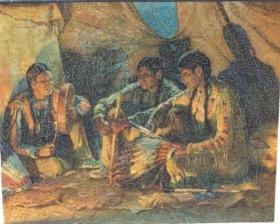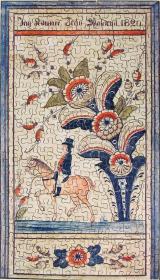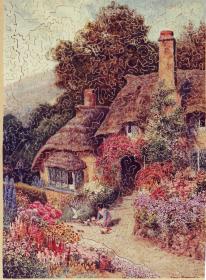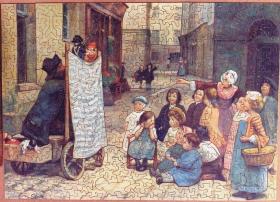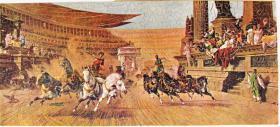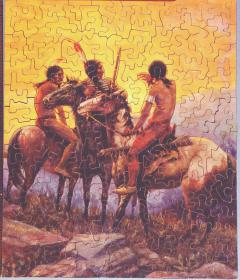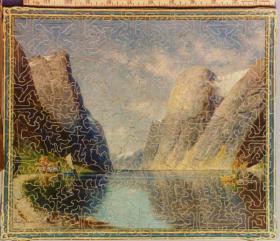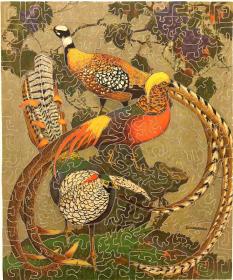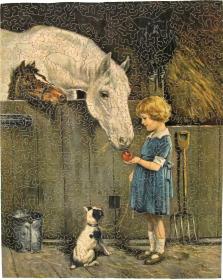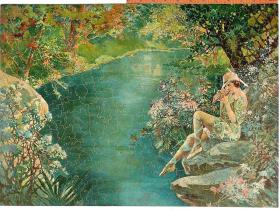The 1930s ushered in the Great Depression and the greatest jigsaw puzzle craze in U.S. history. Technology had improved the die cutting machines used to stamp out cardboard puzzles to a point where production runs of millions a week were possible and actually achieved in 1932-1933. Many skilled workers were thrown out of work by the depression and thousands turned to producing hand-cut wood puzzles in their attics and garages. Whereas the 1909 era was dominated by female cutters, the 1930's was dominated by men. Because wood puzzles were considerably more expensive than die cut ones, small puzzle lending libraries sprang up along with sales of new hand-cut puzzles. With quality plywood readily available and power driven scroll saws selling for as little as $5, most puzzles produced were interlocking and some were notable examples of how intricate and complex a puzzle could be cut. With times hard and few able to afford travel, pictures selected tended to reflect a yearning for the exotic and foreign. Many small cutters simply “recycled” last year’s calendar pictures or tore pictures from old magazines. Thus, the same pictures were cut repeatedly by different cutters, all with their individual styles. By the late 1930's the puzzle craze had abated, the lending libraries closed and most cutters had moved on to other pursuits. There was a modest surge of interest in puzzles in WW II spurred by wartime scarcity of other forms of entertainment. Anne D. Williams, “Jigsaw Puzzles: An Illustrated History and Price Guide," Wallace-Holmstead (1990 but out of print). Williams, “The Jigsaw Puzzle: Piecing Together a History”, The Berkley Publishing Group (2004). Information about individual makers is also drawn from Ms. Williams' books. Images and descriptions of puzzles cut by many 1930/40s era makers are displayed below in alphabetical order by maker or brand, otherwise alphabetically by title if maker and brand are unknown..
